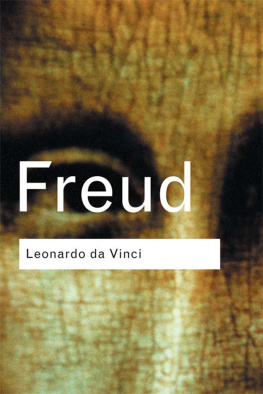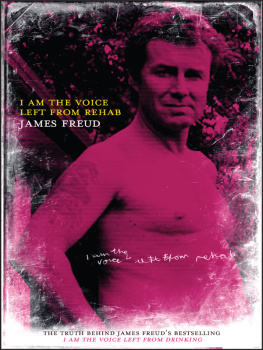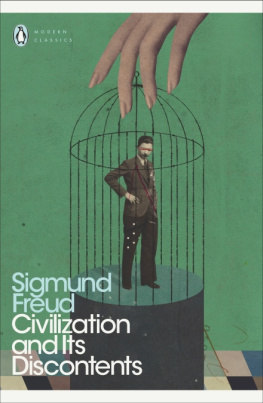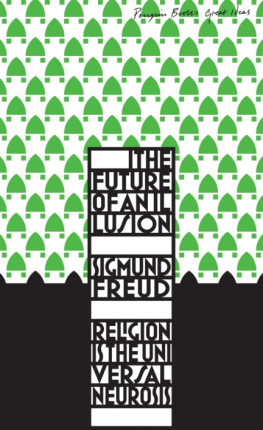Sigmund Freud
The Wolfman
[From the History of an Infantile Neurosis]
TRANSLATED BY LOUISE ADEY HUISH
PENGUIN BOOKS GREAT IDEAS
PENGUIN BOOKS
Published by the Penguin Group
Penguin Books Ltd, 80 Strand, London WC2R 0RL , England
Penguin Group (USA) Inc., 375 Hudson Street, New York, New York 10014, USA
Penguin Group (Canada), 90 Eglinton Avenue East, Suite 700, Toronto, Ontario, Canada M4P 2Y3 (a division of Pearson Penguin Canada Inc.)
Penguin Ireland, 25 St Stephens Green, Dublin 2, Ireland (a division of Penguin Books Ltd)
Penguin Group (Australia), 250 Camberwell Road, Camberwell, Victoria 3124, Australia
(a division of Pearson Australia Group Pty Ltd)
Penguin Books India Pvt Ltd, 11 Community Centre, Panchsheel Park, New Delhi 110 017, India
Penguin Group (NZ), 67 Apollo Drive, Rosedale, North Shore 0632, New Zealand
(a division of Pearson New Zealand Ltd)
Penguin Books (South Africa) (Pty) Ltd, 24 Sturdee Avenue, Rosebank, Johannesburg 2196, South Africa
Penguin Books Ltd, Registered Offices: 80 Strand, London WC2R 0RL , England
www.penguin.com
Aus der Geschichte einer infantilen Neurose first published 1918 in Freud, Sammlung kleiner Schriften zur Neurosenlehre (Vienna, 19061922), 4
Sigmund Freuds German text collected in Gesammelte Werke (194052)
Copyright Imago Publishing Co. Ltd., London, 1946
This translation first published in Penguin Classics 2002
This extract published in Penguin Books 2010
Tranlsation copyright Louise Adey Huish, 2002
All rights reserved
The moral right of the translator has been asserted
Except in the United States of America, this book is sold subject to the condition that it shall not, by way of trade or otherwise, be lent, re-sold, hired out, or otherwise circulated without the publishers prior consent in any form of binding or cover other than that in which it is published and without a similar condition including this condition being imposed on the subsequent purchaser
ISBN: 978-0-14-193914-8
Sigmund Freud
18561939
I
Preliminary Remarks
The case of illness that I shall document in the following pages once again only in fragmentary form has a number of distinguishing peculiarities which demand some special comment before I embark on my account. The case concerns a young man who suffered a physical collapse in his eighteenth year following a gonorrhoeal infection; when, several years later, he came to me for psychoanalytic treatment he was completely dependent and incapable of autonomous existence. He had lived more or less normally during the decade of his youth which preceded the illness and had completed his secondary school studies without undue disruption. His earlier years, however, had been dominated by a serious neurotic disorder which began shortly before his fourth birthday as anxiety hysteria (animal phobia) and then turned into an obsessive-compulsive neurosis [Zwangsneurose], religious in content, the ramifications of which persisted into his tenth year.
I shall document only this infantile neurosis. Despite a direct demand to this effect on the part of my patient I have declined to write a complete history of his illness, treatment and recovery because I regard the exercise as technically impracticable and socially unacceptable. This deprives me of the possibility of demonstrating the connection between his childhood illness and the later, definitive episode. Of the latter I can say only that it caused our patient to spend long periods of time in German sanatoria where his case was classified by the highest authorities as manic-depressive psychosis. This was an accurate diagnosis of the patients father, whose life, rich in interests and activities, had regularly been disrupted by severe attacks of depression. As far as the son is concerned, however, I have been unable to observe, in the course of several years, any mood swings that go beyond what is consonant with the obvious psychic situation in terms of intensity and conditions of appearance. I have formed the impression that this case, like many others on which clinical psychiatry imposes a variety of changing diagnoses, is to be understood as a residual condition resulting from a case of obsessive-compulsive neurosis which has spontaneously run its course but where recovery has been incomplete.
My account will thus deal with an infantile neurosis analysed not during the course of the illness but fifteen years after it had come to an end. This situation has both advantages and disadvantages in comparison with the other. Analysis of the neurotic child himself will appear fundamentally more reliable but is unlikely to contain much by way of content; we have to put too many words and thoughts into the childs mouth and may perhaps find nevertheless that the deepest strata cannot be penetrated by consciousness. Analysis of a childhood illness via the medium of adult memory, where the individual is now intellectually mature, is free of such limitations; but we must take into account the distortion and adjustment that takes place when, at a later date, we look back at our own past. The former situation brings more convincing results, perhaps, but the latter is by far the more instructive.
In any case it is fair to say that the analysis of childhood neuroses can lay claim to a particularly high degree of theoretical interest. Such analyses do about the same for the proper understanding of adult neurosis as childrens dreams do for the dreams of adults. Not that they can be seen through more easily or are composed of fewer elements; the difficulty of empathizing with the inner life [Seelenleben] of the child in fact makes such dreams particularly hard work for the physician. However, they dispense with so many of the subsequent layers that the essential elements of the neurosis emerge with unmistakable clarity. It is well known that resistance to the results of psychoanalysis has taken a new form in the present phase of the battle over psychoanalysis. Previously it was enough to challenge the reality of the facts asserted by analysis and to this end the best technique appeared to be to avoid any kind of verification. Apparently, this procedure is gradually being exhausted and opposition now takes a different route, acknowledging the facts but disposing of the resulting conclusions by means of re-interpretation so that it is possible, after all, to fend off such offensive conclusions. The study of childhood neurosis shows that these attempts at reinterpretation, which are either shallow or forced, are entirely inadequate. It demonstrates that the libidinal drives which my opponents would so like to deny are of paramount importance in the formation of neurosis, while revealing the absence of any pursuit of distant cultural goals, about which the child knows nothing and which can therefore have no meaning for him.
Another feature that commends the analysis described here to the readers attention relates to the severity of the illness and the length of treatment required. Those analyses that lead quickly to a favourable outcome are valuable for the therapists self-confidence and demonstrate the medical significance of psychoanalysis; but they remain of scant importance in promoting our scientific understanding. We learn nothing new from them. They lead so quickly to success only because we already knew everything that was necessary to deal with them. We can only learn something new from analyses that present us with particular difficulties, which can be surmounted only after some considerable time. In these cases alone do we succeed in descending to the deepest and most primitive strata of inner development in order to retrieve solutions to problems which are posed by the forms assumed subsequently by that very development. Strictly speaking we might then say that only an analysis that has penetrated thus far is worthy of the name. Of course, a single case cannot enlighten us with regard to everything we should like to know. Or, more precisely, it could tell us everything if we were only in a position to comprehend it all and if the unpractised nature of our own perceptions did not oblige us to be content with just a little.
Next page










